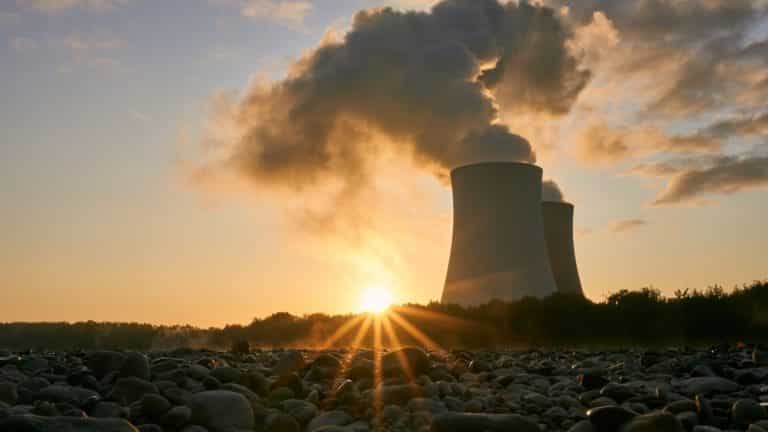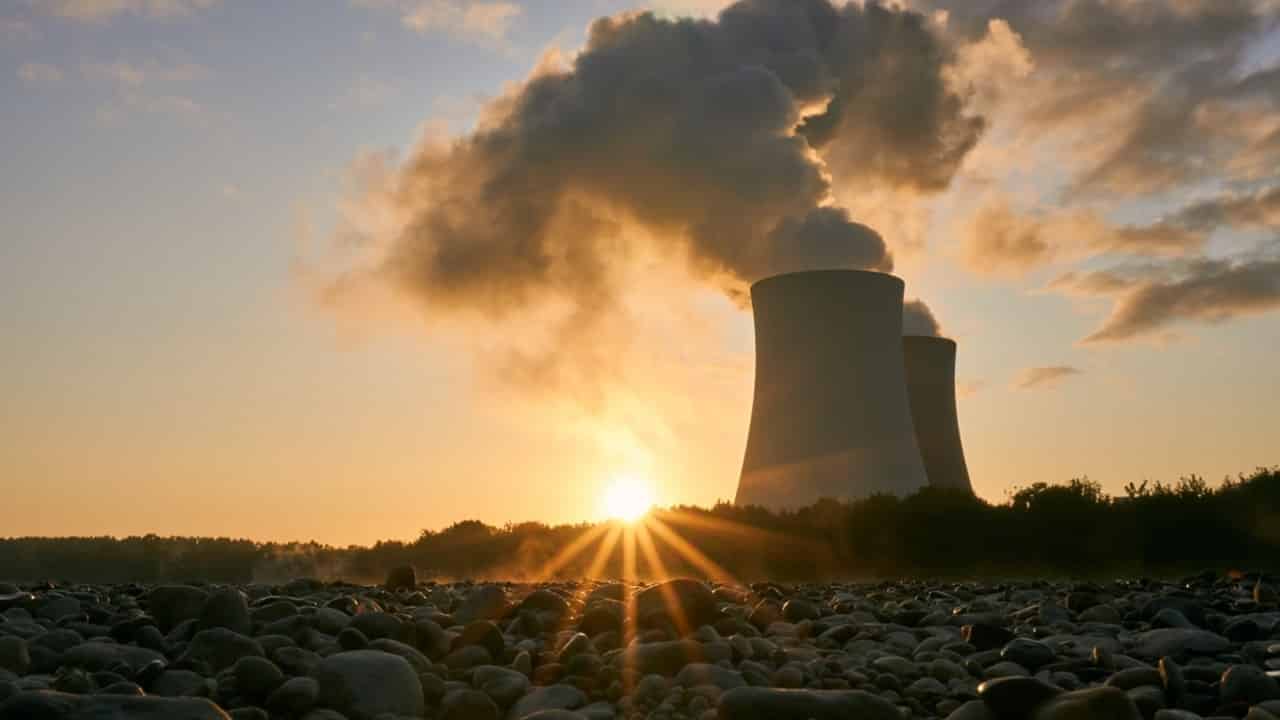
European Union is trying to paint nuclear energy green.
How the inclusion of nuclear energy in the sustainability’s taxonomy is spreading intense debates among European countries.
With the beginning of the new year, the European Commission has released the updated version of its taxonomy, that defines which investments can be considered sustainable and which not, including for the first time nuclear activities and natural gases ones. The taxonomy, which aims at reducing information asymmetry and greenwashing, deeply influence the overall financial system, since it is the guideline for climate-related investing and for EU government spending towards the climate transition.
Exactly because it mobilizes hundred of billions of euros both from public and private investments, political influences have shown up. Indeed, the decision is none other than the outcome of a long and intense pressure that pro-nuclear countries, led by France, have put on the EU Commission. And this pressure has sharply increased in recent months, since many European countries have faced a huge growth in electricity prices driven by an increase in demand for natural gases import.
France has been one of the main supporters of this taxonomy shift mainly because it relies much on nuclear energy, which produces almost two-thirds of French electricity and sustains the country’s employment. In addition, France has complained for many years that the punishment that taxonomy has introduced over nuclear energy is unjustified, since this kind of energy does not generate greenhouse gases emissions. This is exactly what nuclear energy’s supporters have pointed out, claiming that this source, being more stable and more reliable than others since it is not influenced by weather and does not depend on a steady supply of coal or gases, can play a fundamental role in reaching the net zero emissions goal by 2050.
Despite these advantages and despite the approval from the majority of European Parliament members seems certain, there are also many opponents that have threaten to move forward with a legal action if nuclear energy will be labelled as sustainable investment. Austria and Luxemburg have claimed they will pursue a lawsuit against the European Commission, while Spain have asserted it may draw up its own green taxonomy excluding nuclear power and natural gas, creating in this way distorted incentives in the financial system.
The opponents mainly complain that despite its emissions’ footprint is almost nil, nuclear energy produces toxic waste that requires safe disposal and that can trigger radiation risk, introducing fundamental safety measures that usually are complex and expensive. Exactly for this reason many experts have claimed that the inclusion of nuclear energy in the taxonomy is unsuitable, being at odds with the principle of “do no significant harm” the overall environment, which is a crucial requirement for green eligibility.
In addition, there are nuclear reactors similar to the Chernobyl one that still operate (mainly in Russia), and this has instituted the fear for nuclear catastrophes in many countries and many individuals. But it is important to point out that many other countries and firms are developing new technologies that are the nuclear industry’s big hope, such as small modular reactors (SMRs) or the research focused on thorium, a more abundant fissile material that produces less waste.
The taxonomy actually has taken the former risks into consideration, identifying nuclear energy sustainable as long as plans to safely dispose toxic waste are carried out and conceiving it as a transitional tool (indeed new nuclear plants will be recognised as green only if built within 2045). But opponents assert these disposal plans may never occur and therefore ask for deeper changes in the European text.
Despite the debate is surely extremely controversial, what is certain is that nuclear energy will be essential in boosting stability of sustainable energy supply until renewable technologies won’t be able to satisfy a modern economy’s need for power. Therefore, the solution is not to abandon nuclear energy and leave it out from development plans, but, on the other hand, to boost research on new technologies that can make this source of energy safer. And this is the final aim of the taxonomy switch.
Author: Edith Oldani
European Union is trying to paint nuclear energy green.
How the inclusion of nuclear energy in the sustainability’s taxonomy is spreading intense debates among European countries.
With the beginning of the new year, the European Commission has released the updated version of its taxonomy, that defines which investments can be considered sustainable and which not, including for the first time nuclear activities and natural gases ones. The taxonomy, which aims at reducing information asymmetry and greenwashing, deeply influence the overall financial system, since it is the guideline for climate-related investing and for EU government spending towards the climate transition.
Exactly because it mobilizes hundred of billions of euros both from public and private investments, political influences have shown up. Indeed, the decision is none other than the outcome of a long and intense pressure that pro-nuclear countries, led by France, have put on the EU Commission. And this pressure has sharply increased in recent months, since many European countries have faced a huge growth in electricity prices driven by an increase in demand for natural gases import.
France has been one of the main supporters of this taxonomy shift mainly because it relies much on nuclear energy, which produces almost two-thirds of French electricity and sustains the country’s employment. In addition, France has complained for many years that the punishment that taxonomy has introduced over nuclear energy is unjustified, since this kind of energy does not generate greenhouse gases emissions. This is exactly what nuclear energy’s supporters have pointed out, claiming that this source, being more stable and more reliable than others since it is not influenced by weather and does not depend on a steady supply of coal or gases, can play a fundamental role in reaching the net zero emissions goal by 2050.
Despite these advantages and despite the approval from the majority of European Parliament members seems certain, there are also many opponents that have threaten to move forward with a legal action if nuclear energy will be labelled as sustainable investment. Austria and Luxemburg have claimed they will pursue a lawsuit against the European Commission, while Spain have asserted it may draw up its own green taxonomy excluding nuclear power and natural gas, creating in this way distorted incentives in the financial system.
The opponents mainly complain that despite its emissions’ footprint is almost nil, nuclear energy produces toxic waste that requires safe disposal and that can trigger radiation risk, introducing fundamental safety measures that usually are complex and expensive. Exactly for this reason many experts have claimed that the inclusion of nuclear energy in the taxonomy is unsuitable, being at odds with the principle of “do no significant harm” the overall environment, which is a crucial requirement for green eligibility.
In addition, there are nuclear reactors similar to the Chernobyl one that still operate (mainly in Russia), and this has instituted the fear for nuclear catastrophes in many countries and many individuals. But it is important to point out that many other countries and firms are developing new technologies that are the nuclear industry’s big hope, such as small modular reactors (SMRs) or the research focused on thorium, a more abundant fissile material that produces less waste.
The taxonomy actually has taken the former risks into consideration, identifying nuclear energy sustainable as long as plans to safely dispose toxic waste are carried out and conceiving it as a transitional tool (indeed new nuclear plants will be recognised as green only if built within 2045). But opponents assert these disposal plans may never occur and therefore ask for deeper changes in the European text.
Despite the debate is surely extremely controversial, what is certain is that nuclear energy will be essential in boosting stability of sustainable energy supply until renewable technologies won’t be able to satisfy a modern economy’s need for power. Therefore, the solution is not to abandon nuclear energy and leave it out from development plans, but, on the other hand, to boost research on new technologies that can make this source of energy safer. And this is the final aim of the taxonomy switch.
Author: Edith Oldani
RELATED
Regulatory Developments in ESG Reporting and Their Implications for Businesses
The focus on Environmental, Social, and Governance (ESG) factors has surged, leading to significant regulatory changes worldwide. Key developments include the EU’s Corporate Sustainability Reporting Directive (CSRD), the US SEC’s...
Read MoreThe Earthshot Prize 2022
The Earthshot Prize 2022 The Earthshot prize is an award given to five winners that created some projects that could help our planet face some of the most important challenges...
Read More

